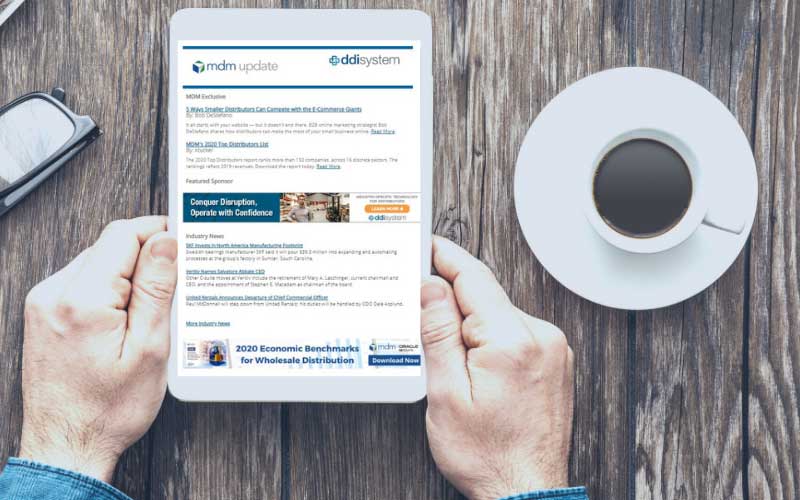We all want to know what our customers value so we can better focus our value creation strategies. Customer needs and pain points are the best drivers for a company’s growth strategy development and resource allocation.
However, learning what customers value and aligning our offerings to those values is easier said than done. An organized and disciplined approach is required; otherwise, we assume price matters most to our customers. Price does matter, but it usually isn’t in customers’ top four buying criteria.
Here, I will provide three easy ways to discover what customers value.
Set yourself up for success with a high-level assessment
Distributors can work to understand our customers, our marketing mix, customers’ buying criteria and how we want to – and have to – do business before developing a sales and marketing plan for each customer group.
How will you define customer segments?
Many companies define macro segments easily with NAICS, SIC code designations, or a custom grouping defined by the sales team.
For example, an industrial automation distributor’s sales reps assign customers to one of the following predefined segments: end-user, integrator, machine builder, OEM or resale customer.
What will you include in your marketing mix in terms of tools, strategies and tactics?
By digging deeper into macro segments such as these, distributors can develop unique value propositions that account for different customer needs. Each distinct value proposition then requires assembling the appropriate mix of marketing tools, strategies and tactics specific to each customer segment. Tailoring the right marketing mix means defining:
- The list of value-add services offered
- Pricing methodologies
- Marketing communications methods (trade shows, online ads, trade journals)
- Sales approach (transactional, consultative)
- Preferred sales channels (online, telephone, through branches)
- Sales force type (hunters, farmers, defenders, rainmakers)
- Delivery methods (3PL, parcel services, drop-ship)
- Customer-service support structure (pre-sale, post-sale)
What are your customers’ buying criteria?
The list of buying criteria varies based on the line of trade and customer needs. Based on our interactions with several distributors in the last year, we at ActVantage developed the following list:
- Quality of products and services
- Product availability
- Technical support capabilities
- Sales channel preference
- Shipping accuracy and reliability
- Credit terms flexibility
- Pricing competitiveness
How do you want to – and have to – do business?
Customers’ buying criteria help shape a company’s value proposition. But a distributor can also ensure the value proposition represents the way it wants to do business and meets industry expectations.
- In many distribution environments, quality, delivery, reliability, availability and shipping accuracy are “table stakes” the distributor provides to be in business.
- A broader product breadth implies more inventory, more significant asset investment and an increased risk of product obsolescence.
- Competing on credit terms usually means loosening them. Longer or looser payment terms increase the distributor’s asset investment in accounts receivable and the bad debt risk.
- Competing on credit or inventory requires more significant investments, for which most small- and mid-size distributors are not well-positioned.
- Consultative selling requires a higher level of sales force training. Customers need convincing about the value of giving the sales force face time, and distributors must be willing to invest in developing selling skills.
- Coaching and training a sales force to handle challenges arising due to the current supply chain disruption is a must-do. This includes the capability to address long lead times, multiple price changes, transparency of product availability and proactive communication.
Three sources to inform customer buying criteria
Dynamic forces in the external environment, such as economic and capital market volatility, supply chain risk and globalization challenges, can drive changes in customer requirements. Best practice firms identify these changes through disciplined market micro-segmentation, allowing them to pivot their go-to-market strategy as needed.
There are three easy ways companies can collect information on customers’ buying criteria to help define micro-segments and group customers based on what they value:
- analytics on transactional data,
- sales force input
- customer input via surveys and interviews.
I’ve listed them below in order of what is typically the most accessible.
1. Voice of Transaction Data (VoTD)
The most objective and consistent approach is to look at transactional data. Marketing, sales and management teams can easily identify critical factors that represent purchasing criteria by looking at data routinely collected by a company’s IT system. Your data can provide a story around what your customers value and prioritize, making it possible to bucket your customers into micro-segments. The following is a list of typical micro-segments based on key metrics that are indicative of core purchasing criteria.
- Product breadth. This is likely critical to the customer if a customer has line penetration of greater than 30%. (In other words, if the distributor offers 10 product lines and the customer purchases across three or more of them).
- Reliability. You can identify this micro-segment using the number of orders each customer places. The higher the number of orders, the greater the reliance on the distributor for order fulfillment (and the greater the importance of reliability). A rule of thumb is to set the threshold for this micro-segment at 60 orders per year (or an average of five orders per month).
- Appetite for slow-moving inventory. You can identify this by looking at the percentage of C and D items accessed by each customer. If the percentage of C and D items accessed is more than 50% of all items purchased — that is, if a customer buys 100 different items of which more than 50 items are either C or D items — it signifies that slow-moving inventory is critical to the customer.
- Price. The distributor can identify this micro-segment based on the percentage of purchases that take advantage of promotions or volume-based discounts. The higher the percentage of discount-based purchases, the more important pricing is in a customer’s purchasing criteria.
- Credit terms. Higher days to pay indicates the customer’s need for flexible credit terms. If days to pay are consistently more than 45 (but not trending higher, which could signal financial distress and increased risk), it could suggest that credit terms are critical to the customer.
- Technical support. A higher number of calls relative to other customers indicates a greater reliance on the distributor’s technical expertise. If the number of calls averages more than once a quarter, technical support may be critical to the customer.
- Delivery. Higher same-day delivery requests indicate a greater reliance on the distributor’s delivery capabilities. If the percentage of same-day deliveries is more than 40% of all their orders, delivery is critical to the customer.
This simple data-mining exercise of VoTD will provide an objective story around your customer expectations and help you optimally plan, allocate and deploy your resources. You can give this information to your sales teams to help build on and improve customer relationships.
2. Voice of Sales Force (VoS)
Another approach involves using sales force input to perform micro-segmentation. The sales force can be a rich source of information.
To demonstrate the VoS approach, consider the example of an industrial distributor with 10 inside sales and 20 outside sales personnel. The frequency of contact for each customer is every three weeks. If the outside salesperson cannot contact a customer, inside sales reps handle the call — they work in tandem to meet customer expectations. The sales force was the best source of information in this case, as they were in constant touch with customers.
This distributor’s marketing team developed a set of questions seeking responses from the sales force. The distributor tallied the responses and grouped the results under four micro-segments: availability, order tracking, will-call (counter sales) and transportation schedules. This approach is straightforward; however, it’s difficult to be objective and separate the emotion from sales force inputs. In addition, recent customer complaints can also influence responses.
3. Voice of Customer (VoC)
To fill in the gaps left by data, another strategy is to listen to the VoC. Distributors send out periodic surveys to customers to understand their requirements — surveys that identify customers’ needs and their perceived strengths and weaknesses of the distributor. Performing this assessment annually or biannually allows for the appropriate deployment of sales and marketing resources.
To demonstrate the VoC technique, consider a stationery products distributor that developed a set of questions for micro-segmentation. The survey included in-person interviews (top 25 customers), phone interviews (30 future key customers), a third-party survey (500), email surveys (150) and postcards (205).
The distributor tallied the responses and grouped them into five micro-segments: availability, delivery dependability, product variety, price and ease of ordering. The distributor developed its product offerings and deployed sales and marketing resources with a focus on each of these micro-segments. The solution for the customers in each micro-segment was:
- Availability: Inventory levels were increased (primarily the A and B items)
- Delivery dependability: Routing and transportation schedules were modified
- Product variety: New products were onboarded from existing manufacturers
- Price: The company introduced alternate, value-oriented products for customers
- Ease of ordering: The distributor expanded its online ordering capability for customers
The changes reduced the distributor’s time spent resolving customer complaints. This contributed to being recognized as the preferred supplier among its customers. It also increased its profitability and reduced its cost-to-serve, as it did not offer all services to all segments.
Pradip Krishnadevarajan is co-founder of ActVantage, which helps distributors drive profitable growth through analytics and talent development. ActVantage has worked with hundreds of distributors to help them better understand and leverage customer analytics. Prior to ActVantage, Krishnadevarajan led research and industry projects at Texas A&M’s ID program. Reach him at Pradip@actvantage.com or visit actvantage.com.
Related Posts
-
Winona, Minnesota-based Fastenal Co. reported last-month sales of more than $524 million, an 18.9% increase…
-
Winona, Minnesota-based Fastenal Co. reported October sales of more than $531 million, an 8.9% increase…
-
Industrial products wholesale buying group says sales in the first 9 months were $44 billion,…





